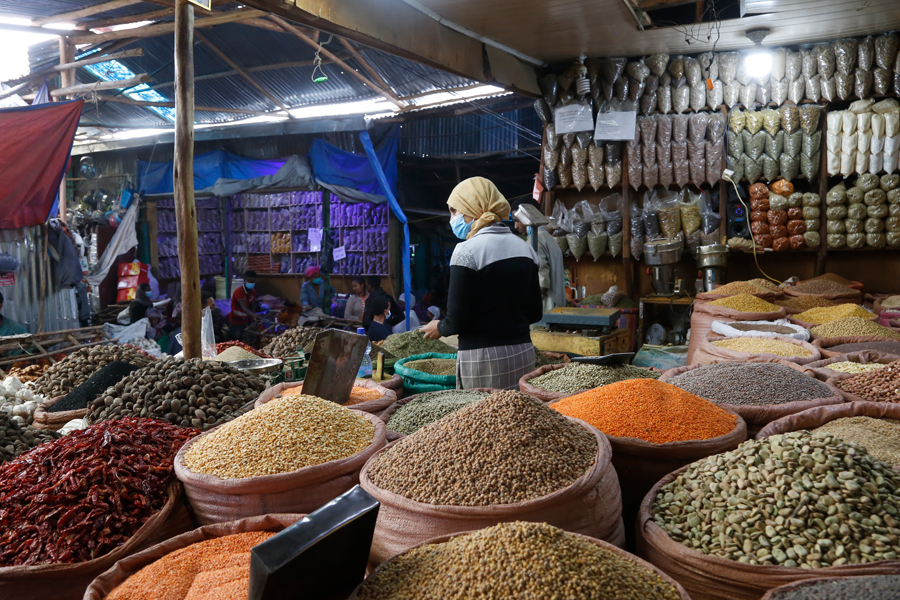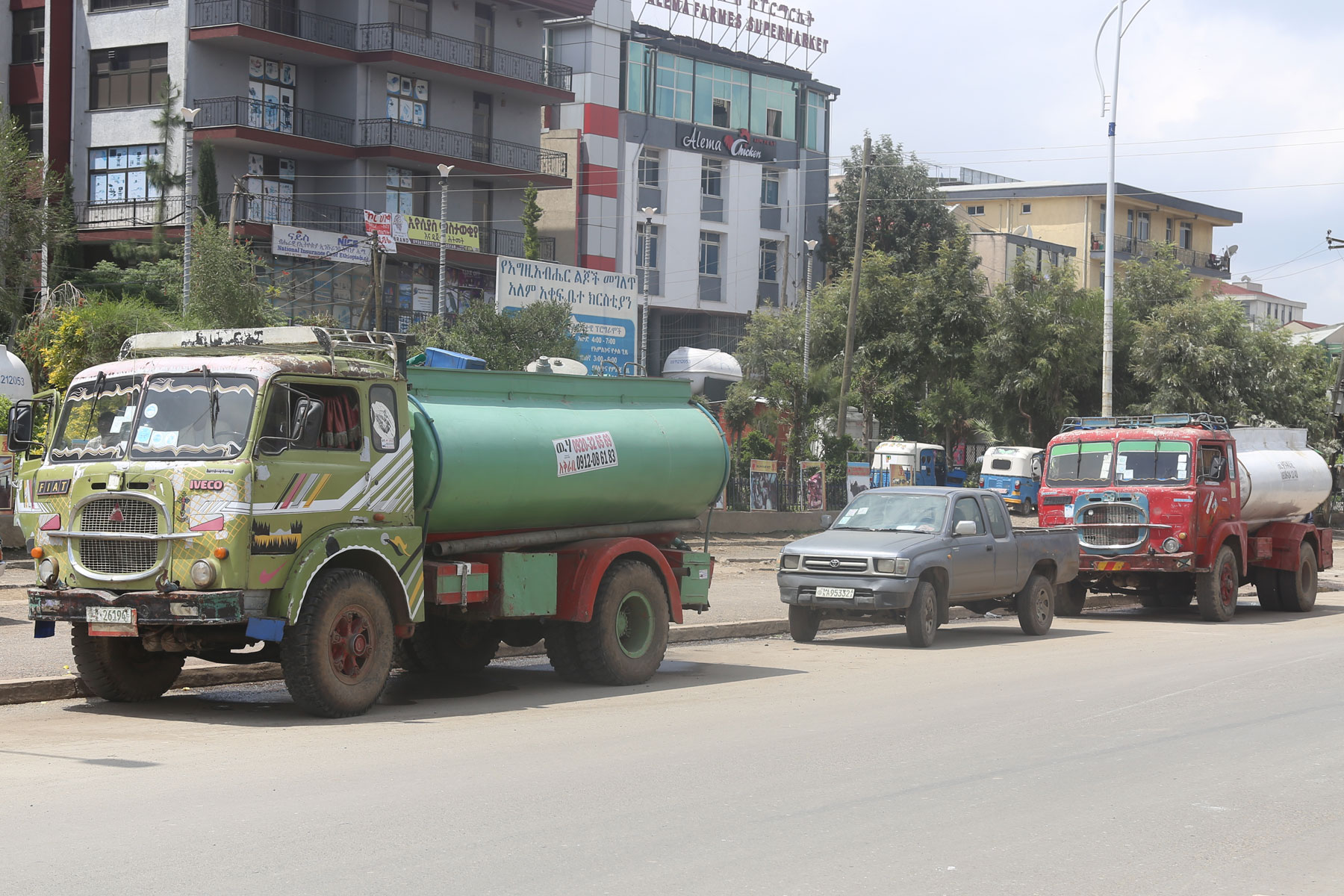
Radar | Feb 02,2019
Jun 22 , 2024
By Mekonnen Solomon
Farmers are wilting under the pressure of outdated pricing methods. Trapped as “price takers” in the cutthroat global market, they’re at the mercy of European giants. Growers face more thorns than roses with the National Bank of Ethiopia’s (NBE) shift from stem to kilogram pricing. The Mariyo variety sells for 0.248 dollars for a stem at auction, yet Ethiopia’s floor price lingers at 0.131 dollars. Can a return to stem-based pricing revive their fortunes, queries Mekonnen Solomon, coordinator of the floriculture sector under the Ministry of Agriculture (MoA).
Flower growers and exporters have long wrestled with their role in the global market, often describing themselves as "price takers" rather than "price makers." The terminology reflects their perceived lack of control over pricing within the highly competitive international flower market. They are forced to accept market prices set by larger, more influential players, primarily based in Europe. These players, including wholesalers, breeders, and re-exporters, possess advantages such as patented products, remote buying technology, value-added logistics facilities, and sophisticated marketing strategies, which allow them to exert substantial influence on market prices.
The perception of being trapped in an uncompetitive position has led flower producers to call for adjustments to the existing minimum floor price set by the National Bank of Ethiopia (NBE). The sentiment has become particularly pronounced since the Floriday market platform introduced a new standard a few weeks ago. Flower exporters are required to set their minimum selling prices, considering cost structures and marketing strategies.
Their critics blame under-invoicing for distorting the picture. They assert that the value of flowers repatriated to Ethiopia is often lower than that received in the global market. These critics contend that detailed records of transactions, such as volume, varieties, stem lengths, thicknesses, colour descriptions, real-time price information, and sales terms, are not easily accessible to regulatory agencies. This lack of transparency fuels suspicions that selling prices at auctions and other market channels are concealed or not fully disclosed by market players. They would argue that fine-tuning the existing minimum floor price might be irrational.
Efforts to make the minimum floor price more responsive to global market conditions have faced numerous pushbacks. There are two different standard units of measurement for flower sales: price per stem and price per kilogram. Globally, flowers are sold by the stem, especially in Dutch auction markets and retail channels. Flower growers who supply to these markets receive real-time selling price information. Yet, the Central Bank's system primarily uses price per kilogram as the standard unit for setting minimum selling prices.
The divergence between these measurement units has caused an apparent tension.
When the floriculture export business began, there was no threshold floor price system to monitor and regulate foreign currency repatriations. The system relied on good faith and honesty, with the Central Bank accepting self-declared prices, invoices, or contractual agreements. During this period, there was little noise about market prices, as the Central Bank accepted whatever price the exporters repatriated for the volume of flowers sold.
However, many were concerned about under-invoicing risks, where exporters might deliberately declare lower values for flowers than their actual market prices.
In April 2007, the Central Bank issued a directive introducing the stem unit of flower measurement, setting a minimum price of 0.1 dollars for a stem. The Ethiopian Customs Commission was then responsible for registering the number of flower stems exported and reporting to the Central Bank to control and manage foreign currency repatriation. However, the directive was short-lived. Flower producers and exporters complained about the inefficiency and quality degradation caused by customs inspection practices, such as opening flower boxes and counting stems at cargo terminals.
In February 2012, the NBE issued another directive, changing the measurement unit from stem to kilogram, and revised the price per kilogram in April 2022. Despite this, many in the flower export business argue that the kilogram unit is neither familiar nor widely used in the global flower market. For the industry, the kilogram measurement mechanism is incompatible with global market practices.
The motivation for changing from stem to kilogram is often seen as the implementing agency's excuse to avoid counting and registering stems accurately. Unlike Ethiopia, Kenya does not set a minimum floor price. Still, it relies on credible international data service providers to access global flower selling price information per stem for domestic tax purposes.
There are limitations to the kilogram unit of measurement for flower growers in Ethiopia. For instance, in the mid-altitude cluster of Bishofu (Debrezeit), the average number of roseflower stems per kilogram is roughly estimated to be 33 stems. The minimum price for rose flowers in this cluster is 4.334 dollars for a kilogram, which is approximately 0.131 dollars for a stem. However, a recent survey by DLV PLANTS revealed that there are more than eight different types of rose varieties with different selling prices in the market for this cluster.
The average auction price for a stem of the Mariyo variety in 2022 was 0.248 dollars, while the Sonrisa variety averaged 0.155 dollars. Thus, the selling price for some varieties was higher than the cluster's floor price average. Thus, the existing floor price regulation does not account for price variations within the same flower variety in a given cluster but only considers agroecology and flower type.
The inherent characteristics of rose flowers, such as stem length, thickness, and customer-specific orders, result in different numbers of stems per kilogram, further complicating the situation. Unfortunately, the current minimum selling price formulation does not consider these characteristics, leading to notable variations in selling prices per kilogram within the same cluster and even within individual company shipments.
Critics argue that setting a minimum selling price per stem would be more advantageous for the country than the current kilogram-based system.
Since the global market primarily uses stem-based pricing, there is an option to adjust the floor selling price based on actual market conditions, increasing foreign currency repatriation and protecting exporters from sudden price shocks. Digital platforms providing real-time price information for various flower varieties can address the potential for under-invoicing, while comparing flower export performances with competing countries becomes easier with a standardised stem measurement. Finally, high-value flower varieties can yield better returns, which may not be realised under the kilogram measurement system.
The conclusion is clear. The kilogram standard unit of measurement is not feasible for regulating minimum threshold prices and ensuring adequate repatriation of foreign currency earnings. It also fails to address malpractice issues related to under-invoicing effectively. The viable solutions seem to be threefold: introducing innovative technology to count flower stems accurately at customs checkpoints, enabling regulatory agencies to determine the actual volume of flowers exported; accessing the digital flower market and price information for each flower variety through reliable means or third parties to manage foreign currency repatriation; and, identifying flower types with different market prices using criteria such as varieties, colour, stem length, stem thickness, bud size, and leaf index.
Ultimately, the floriculture industry's ability to compete globally and secure fair prices depends on aligning its measurement and regulatory practices with international standards. Addressing these will require concerted efforts from both government and industry stakeholders to implement solutions that enhance transparency, accuracy, and competitiveness in the global flower market.
PUBLISHED ON
Jun 22,2024 [ VOL
25 , NO
1260]


Radar | Feb 02,2019

Agenda | Sep 08,2024

Fortune News | May 11,2024

Fortune News | Feb 03,2024

Fortune News | Apr 28,2024

Viewpoints | Jun 07,2025

Viewpoints | Jul 27,2024

Radar | May 27,2023

Featured | Jun 15,2025

Fortune News | Jan 07,2023

My Opinion | 131590 Views | Aug 14,2021

My Opinion | 127946 Views | Aug 21,2021

My Opinion | 125921 Views | Sep 10,2021

My Opinion | 123545 Views | Aug 07,2021

Dec 22 , 2024 . By TIZITA SHEWAFERAW
Charged with transforming colossal state-owned enterprises into modern and competitiv...

Aug 18 , 2024 . By AKSAH ITALO
Although predictable Yonas Zerihun's job in the ride-hailing service is not immune to...

Jul 28 , 2024 . By TIZITA SHEWAFERAW
Unhabitual, perhaps too many, Samuel Gebreyohannes, 38, used to occasionally enjoy a couple of beers at breakfast. However, he recently swit...

Jul 13 , 2024 . By AKSAH ITALO
Investors who rely on tractors, trucks, and field vehicles for commuting, transporting commodities, and f...

Jun 28 , 2025
Meseret Damtie, the assertive auditor general, has never been shy about naming names...

Jun 21 , 2025
A well-worn adage says, “Budget is not destiny, but it is direction.” Examining t...

Jun 14 , 2025
Yet again, the Horn of Africa is bracing for trouble. A region already frayed by wars...

Jun 7 , 2025
Few promises shine brighter in Addis Abeba than the pledge of a roof for every family...

Jun 29 , 2025
Addis Abeba's first rains have coincided with a sweeping rise in private school tuition, prompting the city's education...

Jun 29 , 2025 . By BEZAWIT HULUAGER
Central Bank Governor Mamo Mihretu claimed a bold reconfiguration of monetary policy...

Jun 29 , 2025 . By BEZAWIT HULUAGER
The federal government is betting on a sweeping overhaul of the driver licensing regi...

Jun 29 , 2025 . By NAHOM AYELE
Gadaa Bank has listed 1.2 million shares on the Ethiopian Securities Exchange (ESX),...